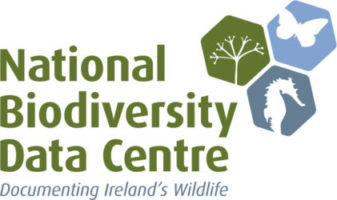
The National Biodiversity Data Centre, based down in Co. Waterford is inviting people to get involved in recording Ireland’s wildlife. Through a variety of projects and citizen science initiatives that the national centre currently coordinates, there are opportunities for everyone to get involved, no matter what your level of experience of nature is.
With social restrictions set to last for at least a further two weeks because of the COVID-19 pandemic, many people will be stuck at home trying to figure out how they can possibly make the most of all this time. Not to be taken lightly, the current crisis is quite literally impacting on people’s mental and physical health because of the fact everyone across society apart from those deemed to be providing essential services have been made “stay at home” and within our 2km confines.
However, depending on how each individual has been impacted by the crisis, one potential positive that might have come out of this ‘pause’ for people has been the opportunity to test out new hobbies, explore new interests or to reconnect with old pastimes. Well, one option according to the National Biodiversity Data Centre’s Director Dr. Liam Lysaght is to “engage with or reconnect with wildlife, either right outside the backdoor or anywhere within 2km of your home when you can get outside.

Recording your sightings online of anything from birds to bees and butterflies to plants with the National Biodiversity Data Centre is a way of making your brief observations of nature permanent. The information that everyone submits is scientifically valuable, contributing further to Ireland’s collective knowledge and understanding of what biodiversity occurs in Ireland, where it is located, and how we might better manage it to ensure its conservation.”
On top of these pros lie the important benefits individual recorders accrue, such as the improvements to both personal mental and physical health. For instance, recent research suggests spending at least 120 minutes in nature a week significantly boosts health and wellbeing which is what some might refer to as a healthy “dose” of Vitamin-N(ature).
There are a number of ways in which people can inject a bit of Vitamin-N into their lives whilst also contributing to citizen science, and if you haven’t got involved to date, there is probably a no better time to start with Spring currently bursting into life:
1. Casual recording, anytime, anywhere
No strings attached, no registrations, or sign-ups needed. Ireland’s Citizen Science Portal, which is managed by the National Biodiversity Data Centre, provides a facility for everyone to submit and store their sightings of nature online. The portal features an All-Ireland County League and an individual Recorder League, both ranking counties and people respectively based on the number of species recorded, so for now at least, there is a substitution for both the Premier League and any GAA action that readers with a competitive edge might be missing.

2. #SpeciesADay Challenge
Follow the National Biodiversity Data Centre on Twitter, Facebook or Instagram, and you can stay up to date with the organisation’s #SpeciesADay social media campaign which is encouraging people to send photos of specific plants or animals each day on the various social media platforms.
3. Backyard Biodiversity
A recording scheme for beginners known as ‘Backyard Biodiversity’ requires you to look for a set-list of 20 different easy-to-identify species that are common garden visitors. Again, there’s no sign-up or registration but you can opt-in and opt-out whenever you like and all you have to do is record the various “target” birds, mammals, amphibians and insects that occur in your garden in your own time.
4. Flower Insect Timed Count (FIT Count)
This citizen science survey can only be done in warm and dry weather and runs from April until the end of September. All you need to do is watch a 50x50cm patch of flowers for 10 minutes which could be in your garden, farm or local park, and record how many insects visit. You don’t need to know any particular insect species in this scheme, but just how to tell the difference between the various major groupings so it’s perfect for beginner recorders.
5. Monitoring Ireland’s wildlife
The National Biodiversity Data Centre also coordinates a number of additional schemes that demand a little bit more time and commitment, and which focus on particular insect groups such as bumblebees, butterflies, dragonflies and damselflies. Monitoring these groups, which requires the recorder to identify each insect down to a species (and sometimes gender!) not only tells us more about the health of their populations, but also paints a more detailed picture of the overall health of our environment.
Should you wish to get involved in any of the initiatives above, why not visit the website of the National Biodiversity Data Centre at www.biodiversityireland.ie, follow their activity on social media, or email them at info@biodiversityireland.ie if you wish to find out more information. And remember, if your garden isn’t quite the oasis for wildlife you wish it was, why not take some gardening tips from the All-Ireland Pollinator Plan (www.pollinators.ie), one of the Centre’s successful grassroots conservation projects aiming to make the whole of Ireland a more pollinator-friendly island.






